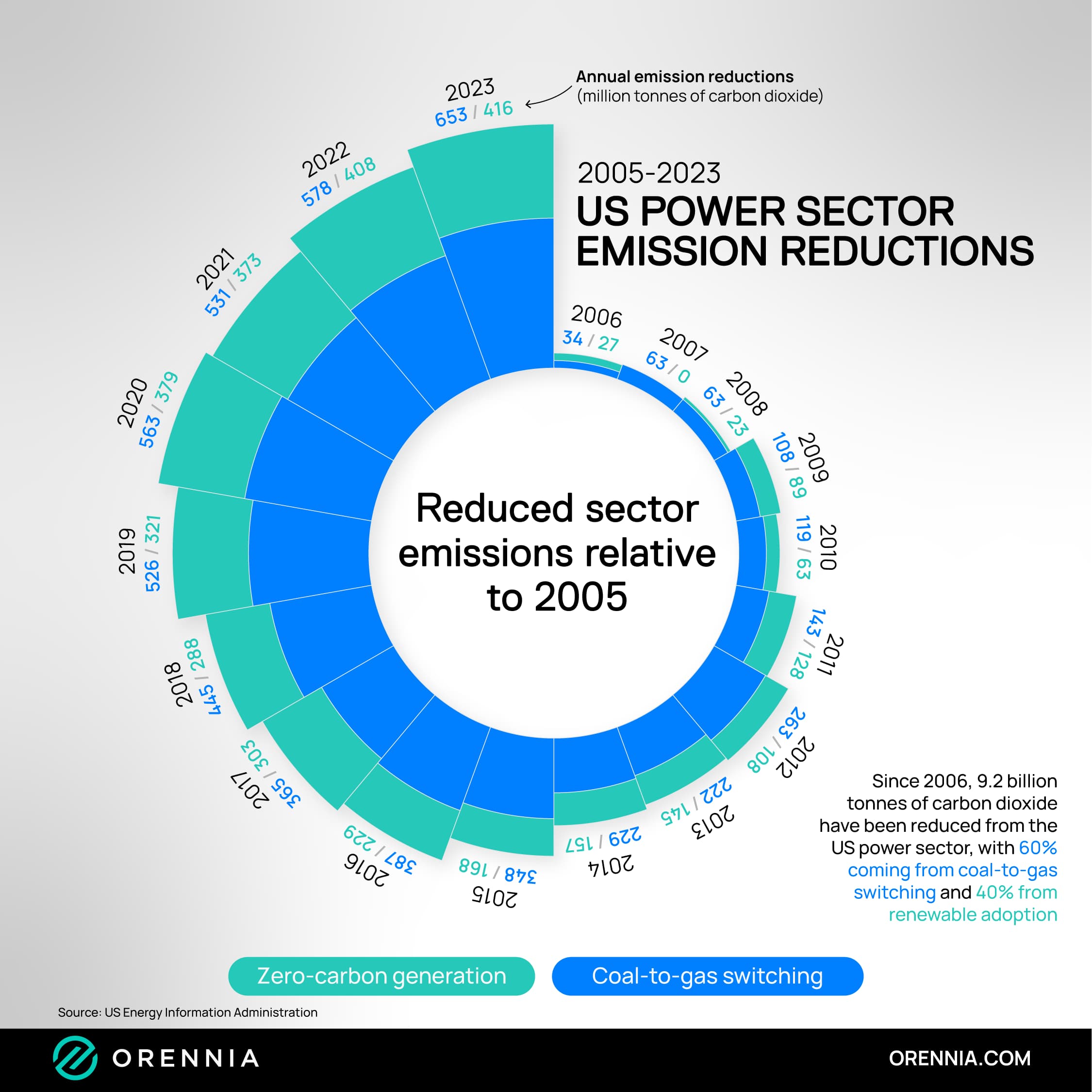
By Aaron Foyer
VP, Orennia
Since 2005, the US power sector has made significant strides in reducing emissions, mainly through the transition from coal to natural gas and the widespread adoption of renewables, particularly wind and solar. These changes have played a critical role in creating a more sustainable energy landscape.
- Coal-to-gas switching: The shift from coal to natural gas has been a major driver of emissions reductions. Natural gas produces about half the carbon dioxide emissions per unit of energy compared to coal. The shale gas revolution, which began in the mid-2000s, increased the availability and reduced the cost of natural gas, making it an attractive alternative to coal. Additionally, environmental regulations like the Mercury and Air Toxics Standards (MATS) and the Clean Power Plan (CPP) have incentivized the transition. Consequently, coal’s share of U.S. electricity generation dropped from nearly 50% in 2005 to around 16% in 2023, while natural gas’s share rose from 19% to over 40%.
- Renewable adoption: The adoption of renewable energy has been crucial. Technological advances, declining costs, and supportive policies have driven substantial growth in wind and solar power. These sources now contribute over 25% of total electricity generation, if hydropower is included. Wind and solar energy generate virtually no greenhouse gas emissions, making them essential for a sustainable energy future. Federal tax incentives, state-level renewable portfolio standards (RPS), and improvements in grid integration have supported this growth.
___
FUTURE REDUCTIONS EXPECTED
The combined effects of coal-to-gas switching and renewable energy adoption have led to a significant reduction in the carbon footprint of the U.S. power sector. From 2005 to 2022, carbon dioxide emissions from the sector decreased by almost 40%.
Looking ahead, the trend towards cleaner energy will continue. Coal is expected to be phased out in the US by 2030. After that, advances in battery storage, grid modernization, and emerging technologies such as clean hydrogen and carbon capture will drive further power sector emission reductions.
Aaron Foyer is Vice President, Research and Analytics at Orennia. Prior to Orennia, he leveraged his technical background in management consulting and finance roles. He has experience across the energy landscape including clean hydrogen, renewables, biofuels, oil and gas, petrochemicals and carbon capture. 



